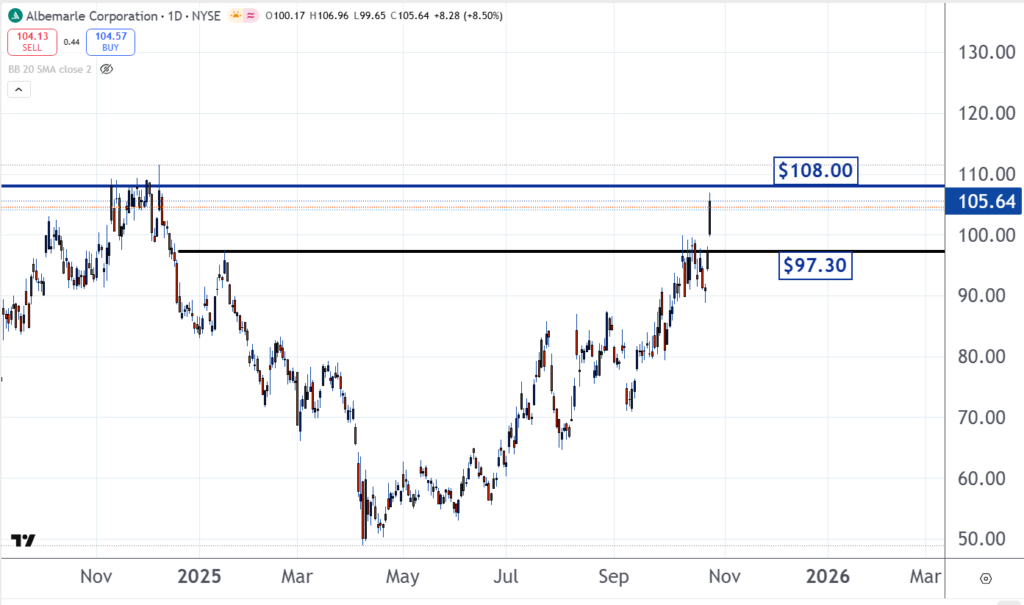
Albemarle Corporation (NYSE:ALB) is trading lower on Monday. The shares were up on Friday but, at last check on Monday, were down over 6.3%. This move followed positive comments and a new ‘buy' recommendation from a brokerage firm.
Some traders are now watching Albemarle for low-risk trading ideas. This is why it is our Stock of the Day.
There are two places in a market where some traders like to buy. The first is just above resistance levels, and the second is just above support levels.
Albemarle may be about to get to one of these places.
Resistance in a market is a price level or a narrow range where there is strong selling interest. If a market is trading higher, there aren't enough sellers to fill all the buy orders. Traders who wish to acquire shares are forced to outbid each other.
This forces the shares into an uptrend.
The tide turns at a resistance level. There is enough supply to fill all the demand. This is why rallies tend to pause or end when they reach them.
But sometimes when a stock reaches resistance, the buyers eventually overpower the sellers and push the price higher. This is called a ‘breakout'. This can be bullish because it shows that the sellers are gone, and this will force buyers to outbid each other again.
As you can see on the chart below, the $108 level has been resistance for Albemarle. Some traders will buy if this resistance breaks.

If the stock heads South, some will be looking for support around $97.30. This level was resistance, and sometimes resistance levels can convert to support. This happens when some people who sold shares at resistance regret doing so and place buy orders if the stock falls back to their sell price.
This buying can create support.
Stocks can rally off support when anxious buyers start to outbid each other. They become impatient and don't want the sellers to go to someone else. This pushes the price up.
If Albemarle drops back to this former resistance level and holds, some traders will be buying.
Understanding where resistance and support levels are can help traders decide where to place their orders. This can lead to profitable trading.
Read Next:
Image: Shutterstock







